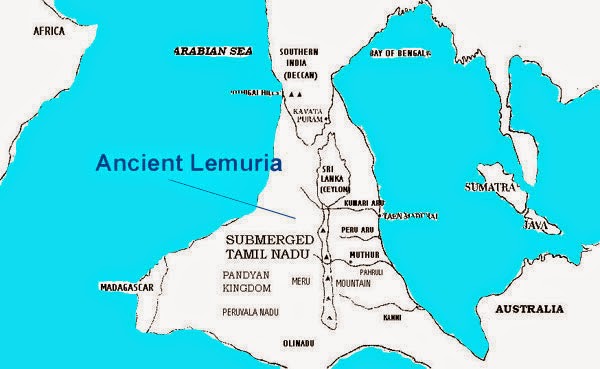Pottery with Tamil-Brahmini inscriptions, Berenike, Egypt, First Century A.D.
The ancient Tamil chief Korran ruled Kudiramalai between the 1st century BCE- late 1st century CE.
He was a commander in chief of the Chera Dynasty under the King Makkotai.
An avid horseman and great patron of poetry, Korran ruled from and administered the locality surrounding the ancient capital. He earned the epithet Kattuman Korran or "Horseman Korran" due to his love of horse riding. His father was Pittan, another famous Chera chief. His full name was sometimes credited as Pittan-Korran, following Tamil naming conventions detailed in the Tolkappiyam.
Korran oversaw the trade with Phoenicians, the Romans, the Seres and the Egyptians. Inscriptions in Tamil-Brahmi script from the 1st century BCE-1st century CE bearing his name (Korra-Puman - Korra The Chieftain) were excavated on an amphora fragment at the international Roman trading port of Berenice Troglodytica in present day Egypt. Korran's rule is described at length in the Purananuru and he is eulogised in several poems of Sangam literature. He ruled this area alongside two other chieftains, Elini Athiyamān Nedumān Añci and Kumanan.
Chief Elini of Kudiramalai is described at length in the Purananuru and Akananuru. Kudiramalai was known as Hippuros, a famous port of the island to the ancient Greeks. The historian Pliny states that in the reign of the Emperor Claudius in 47 CE:
Samuel Bochart, a French biblical scholar, first suggested eastern localities for the ports of Ophir and Tarshish during King Solomon's reign, specifically the Tamilakkam where the local people were well known for their gold, pearls, ivory and peacock trade. He fixed on "Tarshish" being the site of Kudiramalai, a possible corruption of Thiruketheeswaram. The Classical Tamil names for ivory, apes, cotton cloth and peacocks which the Israelites imported from the Tamil country are preserved in Hebrew in the Hebrew bible.
Settlements of culturally similar early populations of ancient Sri Lanka and ancient Tamil Nadu in India were excavated at megalithic burial sites at Pomparippu on the west coast just south of Kudiramalai and in Kathiraveli on the east coast of the island. Bearing a remarkable resemblance to burials in the early Pandyan kingdom, these sites were established between the 5th century BCE and 2nd century CE. Kudiramalai shared a similar Tamil name with the equally bustling international port town of Northern Sri Lanka,Kandarodai-Kadiramalai of the Jaffna Peninsula. Other excavations have been conducted at Kudiramalai in the modern era; Bertolacci and Pridham refer to several ruins at the foot of the Kudiramalai hill and nearby Karaitivu island.
.....
In wide-ranging and ongoing excavations at Berenike launched from 1994 (and at many other places on the Eastern Desert), a team of dedicated archaeologists from the University of Delaware (United States) led by Prof. Steven E. Sidebotham (http://www.history.udel.edu/stevenside…/…/steven-sidebotham/) , along with partners from several other institutions, has documented evidence of the cargo from the Malabar coast and people from South India being at the last outpost of the Roman Empire and of Indians on the Berenike-Nile road.
Among the unexpected discoveries at Berenike were a range of ancient Indian goods, including the largest single concentration (7.55 kg) of black peppercorns ever recovered in the classical Mediterranean world (“imported from southern India” and found inside a large vessel made of Nile silt in a temple courtyard); substantial quantities of Indian-made fine ware and kitchen cooking ware and Indian style pottery; Indian-made sail cloth, basketry, matting, etc. from trash dumps; a large quantity of teak wood, black pepper, coconuts, beads made of precious and semi-precious stones, cameo blanks; “a Tamil Brahmi graffito mentioning Korra, a South Indian chieftain”; evidence that “inhabitants from Tamil South India (which then included most of Kerala) were living in Berenike, at least in the early Roman period”; evidence that the Tamil population implied the probable presence of Buddhist worshippers; evidence of Indians at another Roman port 300 km north of Berenike; Indian-made ceramics on the Nile road; a rock inscription mentioning an Indian passing through en route; “abundant evidence for the use of ships built and rigged in India”; and proof “that teak wood (endemic to South India), found in buildings in Berenike, had clearly been reused”(from dismantled ships).
.....
During the Pharaonic era , trading concentrated on the Red Sea on the coast of East Africa. From the Ptolemies (300 v . Chr . ) Drove the Egyptians to southern Arabia and from Roman times to India and Sri Lanka. In Arikamedu , an Indian port , Roman pottery and coins have been found during excavations at Berenike and El Quseir - Qadim promoted Indian Jars , Tamil inscriptions and products from the Far East to days . During the Mameluken- and Ottomanenherrschaft the Red Sea has played a key position for the Mediterranean trade with Asian luxury goods.
In the site The Quseir shipwreck is what remains of an ancient Roman shipwreck located at Quesir which dates from between the 1st century B.C. and the 1st century A.D. It is believed to have belonged to Emperor Augustus and may have been on an outbound voyage to India.
Excavation of the harbor and former settlement at Quseir EL-Qadim have provided indicators pointing towards trade with India.
.....
Pottery with Tamil-Brahmini inscriptions, Berenike, Egypt, First Century A.D.
.....
எகிப்து நாட்டில் தமிழர் பானை (கொற்றப்பூமான்)
கொற்றப்பூமான் என்னும் பெயர் பொறித்த இலங்கை நாட்டு தொல்பொருள் கெய்ரோ காட்சியகத்தில் உள்ளது.
எகிப்து, தாய்லாந்து ஆகிய வெளிநாடுகளில் மேற்கொண்ட அகழ்வாய்வுகளில் பண்டைய தமிழ் எழுத்துக்கள் பொறிக்கப்பட்ட பானையோட்டுச் சில்லுகள் கிடைத்துள்ளன.
எகிப்து நாட்டுப் 'பெரெனிகே' துறைமுகத்தில் கண்டெடுக்கப்பட்டுள்ள பானையோட்டுச் சில்லு இது.
இதில் கொ ற் ற பூ மா ன் என்னும் எழுத்துக்கள் உள்ளன. இவற்றில் [ற], [ன] ஆகிய எழுத்துக்கள் தமிழுக்கு மட்டுமே உரிய சிறப்பு எழுத்துக்கள்.
கொற்ற பூமான் பயன்படுத்திய பானை இது. இவன் எகிப்து நாட்டுக்குச் சென்று வாணிகம் செய்திருக்கிறான்.
எகிப்து நாட்டில் செங்கடல் பகுதியில் லெய்டன் பல்கலைக்கழகத்தார் நடத்திய அகழ்வாராய்ச்சியில் 'கொற்ற பூமான்' என்ற சங்ககாலத் தமிழி எழுத்துக்கள் பொறித்த மதுச்சாடி கிடைத்துள்ளது. இவையிரண்டும் கி.பி. முதல் நூற்றாண்டைச் சேர்ந்த எழுத்துப் பொறிப்புக்கள் ஆகும்.
.....




